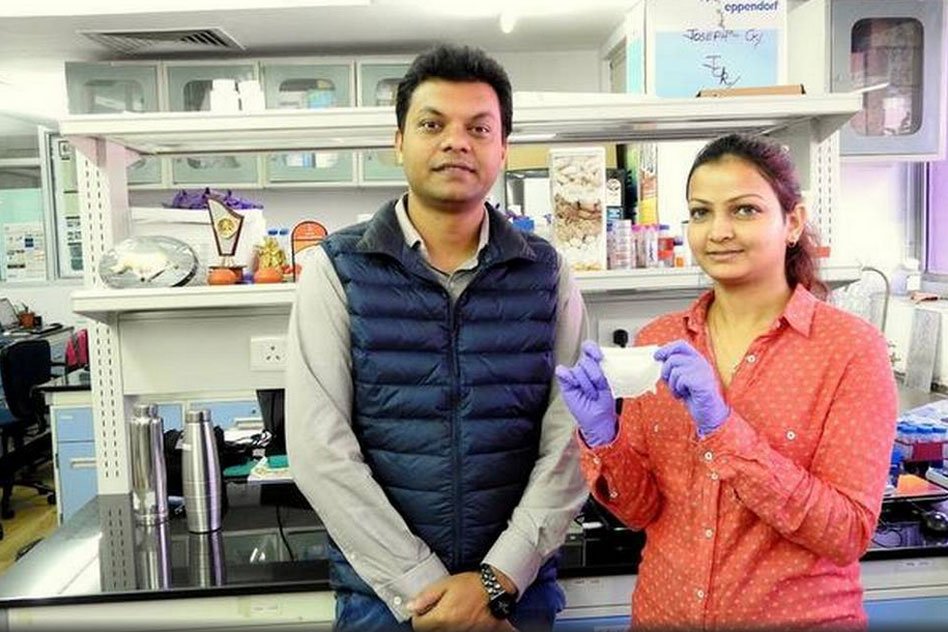IIT-Guwahati Scientists Develop A Nanofibrous Wound-Healing Mat
5 Dec 2016 10:30 AM GMT
IIT-Guwahati scientists have developed a nanofibrous wound-healing mat that interacts with cells and helps wounds heal faster without scarring.
This mat is made of PVA, a non-protein polymer, mixed with silk protein and varnished with an antibiotic and epidermal growth factor. Even the wounds that are 6mm in diameter can be healed with the smart material that accelerates the healing process.
This nanofibrous mat is a boon for people suffering from diabetes for whom the wound-healing process is very slow. The results of this invention were recently published in the Acta Biomaterialia journal.
The team under the supervision of Professor Biman B. Mandal from the Department of Biosciences and Bioengineering, Indian Institute of Technology (IIT)- Guwahati, and the author of the paper assessed the potential of a wild non-mulberry silk and domesticated mulberry silk.
As the healing process starts, progenitor cells gather around the wound site for its repair along with body cells. This is a slow process.
The researchers found that the wild silk has an amino acid sequence (RGD-arginine glycine aspartate) which attracts more cells thus expediting the healing process, allowing cells to attach better. The domesticated mulberry silk does not have any amino acid sequence, and so the healing is slower.
Professor Mandal said that in general, antibiotics have a short life span. Therefore, the team has embedded the antibiotic in the matrix so that the drug releases for up to 80 hours or more, as reported by The Hindu.
The team used proteins from two different types of non-mulberry silk (muga and eri) to synthesise the nanofibrous mat. They then compared its performance with mats integrated with mulberry silk, and a polymer PVA, approved by the US Food and Drug Administration.
The wound healing process took 18 days in case of PVA, 15 days for mulberry silk mat and 10-11 days for wild silk mat. The complete wound healing took 21 days in the control group. The results on wounds of people who have diabetes are yet to be published.
The healing process in rabbits followed the same pathway of normal healing despite critical wound size; no scarring was found, and the skin regenerated completely. There was no inflammation. The mats were also found to be biocompatible on mice.
“Besides well-formed collagen bundles, the healed wounds had sebaceous glands and hair follicles when wild silk mats were used. Mulberry silk mats too closed the wound, but sebaceous glands and hair follicles were significantly fewer in number,” says Dimple Chouhan from IIT Guwahati and the first author of the paper, as reported by The Hindu.
 All section
All section














